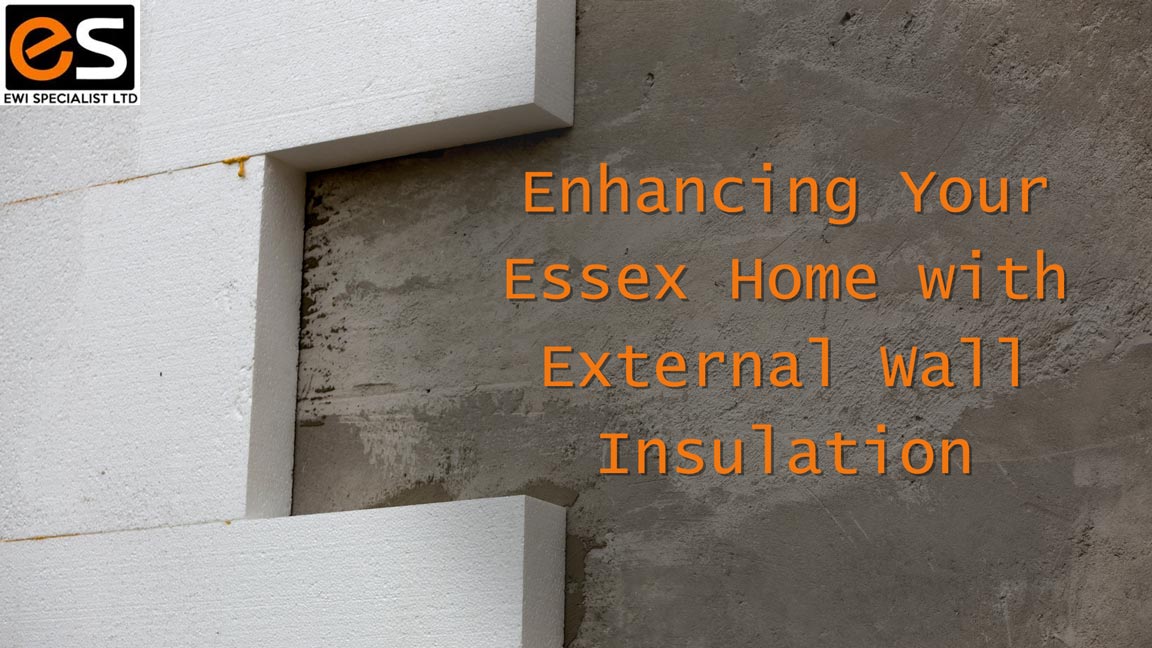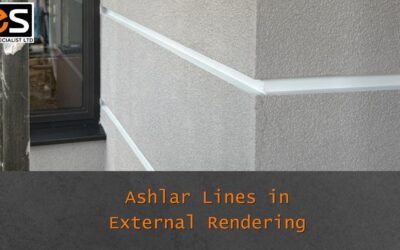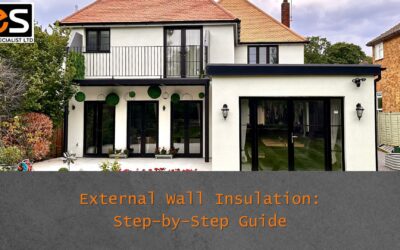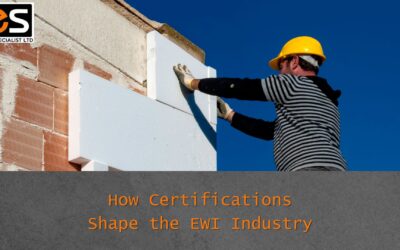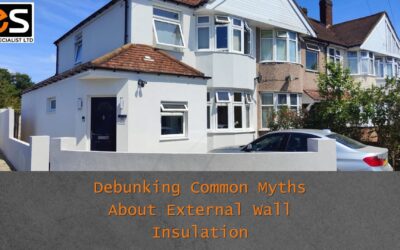Enhance Your Essex Home with External Wall Insulation. External Wall Insulation (EWI), a longstanding technique birthed in Germany and popularised across Europe since the 1960s, stands as a renowned method for enhancing the warmth of existing properties and ensuring optimal thermal efficiency in new constructions.
The popularity of insulating solid walls has intensified recently, spurred by the UK Government’s Green Deal and the Energy Company Obligation initiatives, which underscore the need for thermal improvements in classic solid-wall residences. Considering the complex challenges posed by internal wall insulation, EWI emerges as a prominent option for many traditional homes, provided it complements the property’s external appearance.
In this blog, we will explore external wall insulation, its thermal efficiency, and cost-effectiveness. We’ll discuss the benefits of External Wall Insulation for older homes, examine various insulation material options, and delve into the practical advantages and longevity of this method.
- External Wall Insulation and Thermal Efficiency
- The Growing Need for External Wall Insulation in Essex
- Insulating Older Buildings
- Choosing the Right Insulation Material
Mineral Wool Insulation
Expanded Polystyrene Boards (EPS)
Phenolic and Wood Fibre Insulation
Advanced Insulation Materials - Practical Benefits of External Wall Insulation
- How Does the External Wall Insulation Work
- What’s the Longevity of External Wall Insulation
External Wall Insulation and Thermal Efficiency
EWI is mainly valued for elevating a structure’s thermal efficiency. It tackles the issue that walls are often the source of over 30% of a building’s heat loss. By applying insulation directly to the exterior walls, we can curb this loss, align with strict thermal regulations, and cut down on carbon output – a step in line with the UK’s goal for a net-zero future by 2050.
This insulation method is beneficial for maintaining a consistent temperature, keeping homes warm in winter and cooler in the summer, thus enhancing year-round comfort.
For homeowners, EWI means a potential drop in energy bills, as it helps conserve heat without encroaching on indoor space.
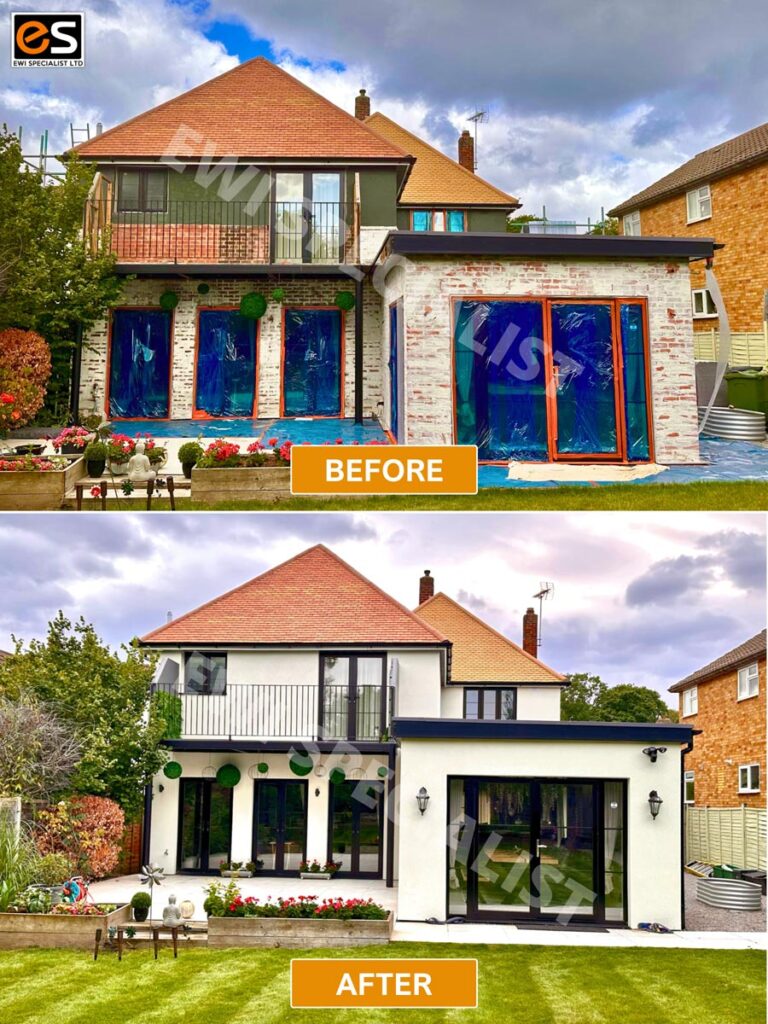
The Growing Need for External Wall Insulation in Essex
With global wholesale energy costs soaring, UK households and businesses are bracing for higher bills. In these tough economic times, two straightforward measures stand out: loft insulation and external wall insulation (EWI).
EWI, much like its loft counterpart, promises substantial long-term savings amidst escalating energy tariffs.
So, what’s the financial benefit?
The savings from EWI vary with your property’s type and size, existing insulation, and the materials chosen.
The Energy Saving Trust estimates annual savings could reach as high as £255 with quality EWI, offering a solid buffer against the anticipated surge in energy expenses.
Insulating Older Buildings
Historic structures were commonly constructed with readily available materials, such as stone or brick, using lime mortar and typically without any gaps or insulation. This means they hold heat poorly. Even with today’s insulated doors and windows, these older homes are often chillier than newer ones.
Adding insulation to the walls of such buildings can greatly enhance warmth and cut down on heating expenses. However, it’s crucial to select insulating materials that allow the walls to breathe to prevent moisture build-up.
Choosing the Right Insulation Material
Thermal insulation is critical for maintaining energy efficiency in buildings. There’s a variety of materials available, each with unique properties and applications.
Mineral Wool Insulation
Made from recycled molten rock or slag, mineral wool is a cost-effective, environmentally friendly option with excellent thermal and sound insulation qualities. It’s fire-resistant but loses effectiveness when wet.
Expanded Polystyrene Boards (EPS)
EPS is an affordable, lightweight option with good insulation performance. It’s resistant to moisture and decay but is flammable and not suitable for high-temperature areas. EPS’s density varies, with higher densities offering greater strength.
Densities of EPS
EPS 50 and 70: Suitable for three-layer walls and flat roofs, with EPS 70 handling minor mechanical loads.
EPS 100: Used for insulating floors and roofs.
EPS 200: Ideal for high-load areas like basements and foundations due to its durability.
Phenolic and Wood Fibre Insulation
Phenolic foam has a slim profile and high thermal efficiency, perfect for tight spaces but at a higher cost. Wood fibre, a sustainable option, provides excellent insulation and moisture regulation.
Advanced Insulation Materials
Polyurethane boasts outstanding insulation properties, offering long-term savings despite its initial cost. Aerogel, one of the most effective insulators, is perfect for space-constrained applications.
Versatile Insulation Solutions
Plates: Rigid panels, often polystyrene or polyurethane, used in various structural areas.
Tread Plates: Metal plates with a raised pattern for traction and ventilation, not traditional insulation.
Waterproof Boards: Moisture-resistant boards suitable for wet areas like basements.
Tubes: Flexible insulators for pipes to minimize heat transfer and prevent freezing.
Granulate: Loose-fill insulation for irregular spaces or cavities.
Mats: Flexible mats for irregular surfaces or wrapping pipes.
Roofing Felt Boards: Water-resistant barriers to protect other insulation materials from the elements.
Practical Benefits of External Wall Insulation
Fitting EWI can change how a building looks, affecting its design details like window ledges and door frames. When adding insulation and possibly render or cladding, it’s vital to consider the original style, especially for buildings in Conservation Areas or with heritage recognition.
It’s important to choose materials and designs that look good and match well with the building. Older homes are meant to let moisture move through them, so it’s essential to use natural, breathable insulating materials that manage moisture and let it dry out with the changing seasons.
How Does the External Wall Insulation Work
External wall insulation is a building material applied to the exteriors of buildings to add an extra protective layer, enhancing a property’s resistance to weather and improving its heat retention, leading to lower energy bills.
The process of fitting EWI includes covering brick or masonry with a durable render, typically made from materials like expanded polystyrene or rigid foam boards, secured with strong adhesives. The specific method of installation varies with each building’s architecture but usually involves fixing battens to the walls, sealing with waterproof agents, and completing the look with plasterboard and decorative finishes.
Once in place, EWI effectively guards against severe weather and boosts sound insulation, making it ideal for homes and businesses alike. It’s also low-maintenance, offering sustained financial savings on heating costs.
What’s the Longevity of External Wall Insulation?
The longevity of external wall insulation is generally around 30 years. This lifespan can lead to significant heating bill savings over time. However, factors such as degradation, which can start as early as 15 years post-installation, severe weather, or external damage, can reduce its lifespan. Additionally, the systems used by some companies are BBA tested to ensure they meet the expected durability standards, further reinforcing the 30-year plus life expectancy of such insulation
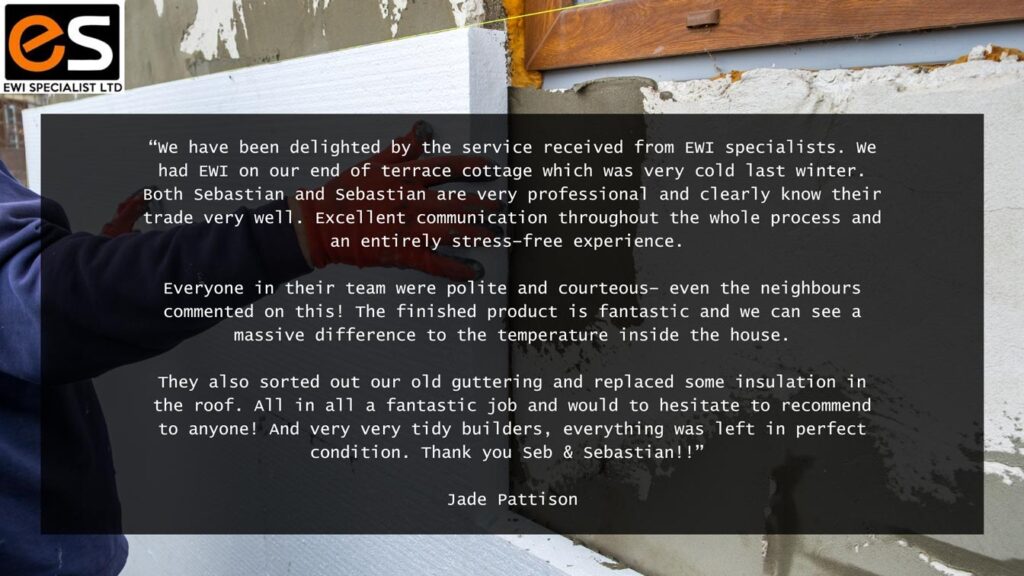
External wall insulation (EWI) is an investment in comfort, efficiency, and aesthetics for Essex homes. With potential energy savings and a lifespan of three decades, EWI is a wise choice for homeowners.
Embrace a warmer, more stylish home while reducing your carbon footprint. Contact EWI Specialist today for a complimentary quote and take the first step towards a greener, cosier living space.


